Enjoy Respect Protect
Easy to say and much harder to do
- Do we hide our true feelings and natural responses in public?
- Can we hide the impacts of chronic stress?
Chances are that for many of us the answer to both these questions can be yes!
The same is true for seals.
What seals do when we are not looking
Most of us have no concept of how seals react and behave in our absence.
On land, generally:
- adults on land are resting, snoozing, sleeping peacefully, socialising, feeding pups, digesting food or replenishing emergency oxygen supplies. The do occasionally get in each other’s way, especially on a rising tide with diminishing intertidal habitat, so they will become alert and moan/howl at each other. This vocalisation invariably means ‘get out of my personal space!’
- sub adults and juveniles may be doing the same, or they could be interacting with each other, potentially developing a pecking order and practicing the moves they will need as adults!
In the sea, seals of any age may be on a mission – travelling between resting, pupping and foraging sites; actively feeding; sleeping (at the surface or even on the seabed) or even looking at a specific area of coastline with a view to hauling out to do more of the same!
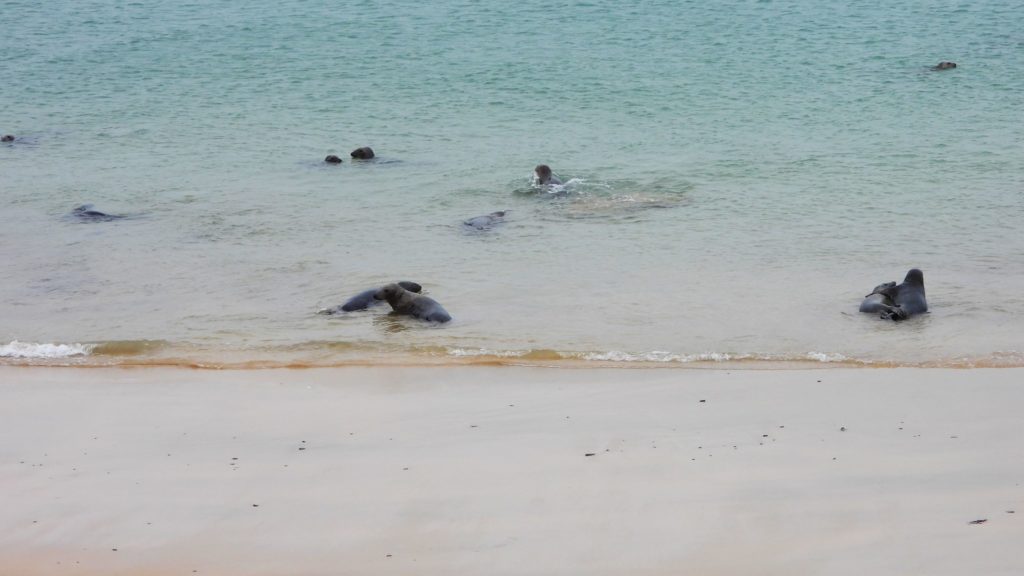
So how do we affect seals?
It is very hard for us all to realise when we are impacting seals in the natural coastal environment they call home.
When seals smell, hear or see people, they will likely have a physiological and behavioural response. Their physiological response is invisible….we can’t see their stress hormone release. Nor can we see their raised heart and breathing rate both of which us more precious energy.
Overriding their natural response
So, if seals stay on a beach/rocks when we are talking loudly on a clifftop, at the back of the dunes or behind a fence, it could be because the ambient sound levels are masking our sound. Or, it could be they know how much they need to stay and rest and make a conscious decision to override their stress hormone flight response with associated energy expenditure of a racing heart and faster breathing. Why? Because they know the alternative is an even bigger waste of energy by moving into the sea and swimming the 10 to 40km to the next suitable resting haul out site.
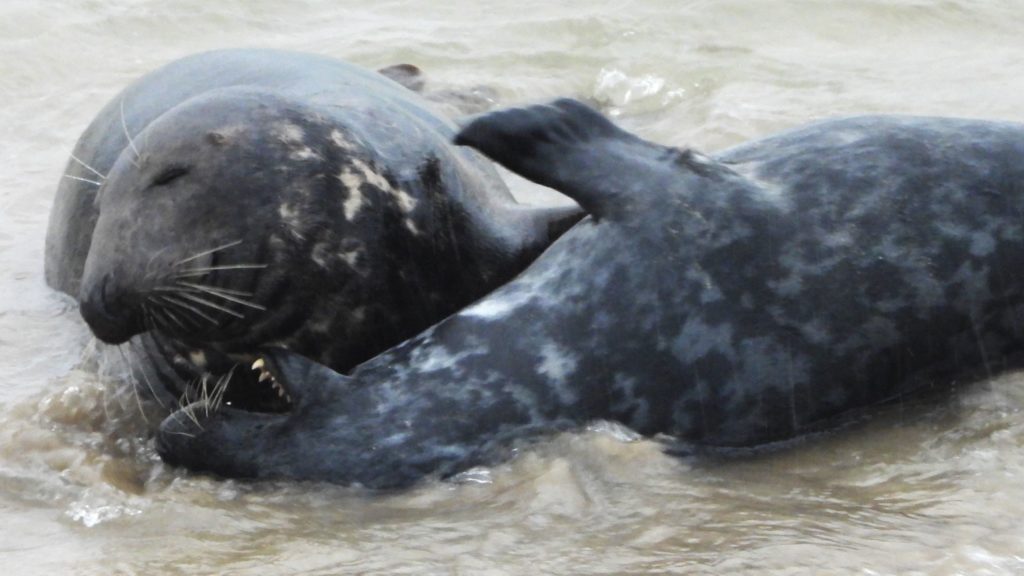
Busting a myth
It is a misunderstanding by us to think that a seal staying on the beach in our presence is comfortable with us being there. It is more likely that they are just tolerating us because they have to. If any seal is looking in our direction (as opposed to just resting, sleeping or interacting with other seals) then we have changed their behaviour and disturbed them with invisible energy consequences. If this happens all day long, then the seals get no quality rest. We all know how important quality sleep is to our own health and wellbeing. Sleep is vital to human and seal longevity as we are both mammals. Imagine how you would feel having been repeatedly woken up throughout the night….the same is true for seals being disturbed throughout the day by numerous strangers entering their home.
All natural behaviours are delicately balanced according to the energetics of individual seals.
Like us, their equivalent of tiredness will vary, as will their need to rest.
Unlike us, seals are less diurnally dependent…they need to sleep during the day, they do not have access to unlimited food supplies and they have do have to use a lot of energy to be able to catch any food for them to be able to eat at all.
We only see a behavioural response, when it is extreme and they tombstone from height, stampede into the sea or crash dive out of our sight. We see the seal swim off, but we rarely see the injuries sustained from rushing over rocks or worse still the delayed impacts of life-threatening broken bones resulting from tombstoning off rocks.
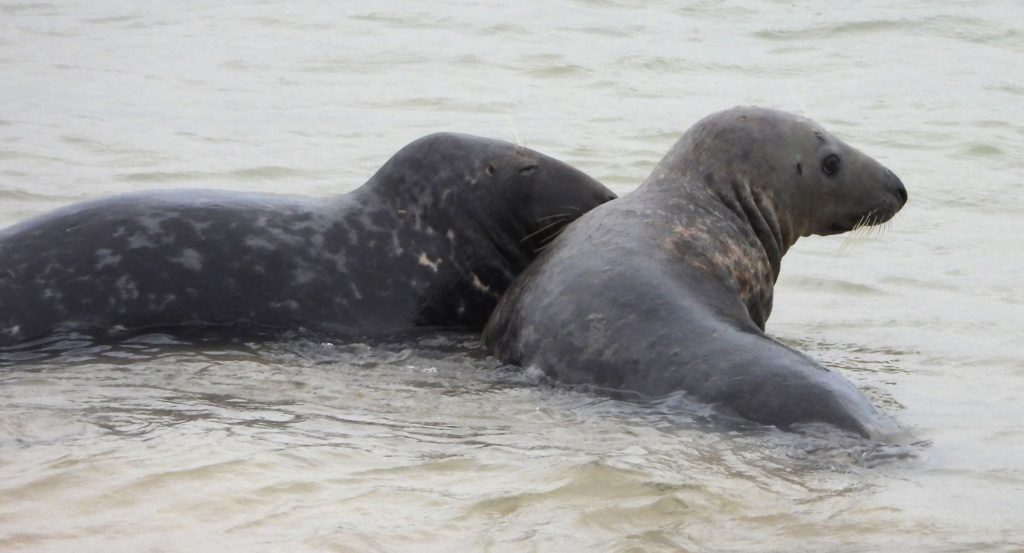
Do we care enough to help seals?
So, it is vital we all enjoy these beautiful, globally rare, native heritage marine creatures without them even being aware of our presence. If we do this, then we get the privilege of seeing their wonderful natural wild behaviours and interactions with each other. This increases our sense of wellbeing and enhances our respect and appreciation of seals and inspires us to want to help conserve and protect them.
Coastal habitats are home for seals.
Do we care enough, to change our behaviour to help seals?
Are we willing to make space for seals, by not encroaching into their preferred habitat?
Can we decide to stay off beaches where seals have chosen to be and use an alternative cove?
Or do we keep on doing what we have always done by accessing these spaces and displacing seals from their home?
It is for each of us to decide individually where our priorities lie. Landowners can also proactively and dynamically manage people access to places that seals have chosen to use. Volunteer community groups can and do help this process by engaging with the public and explaining why and how we can help our globally rare, native, heritage, speciality species.
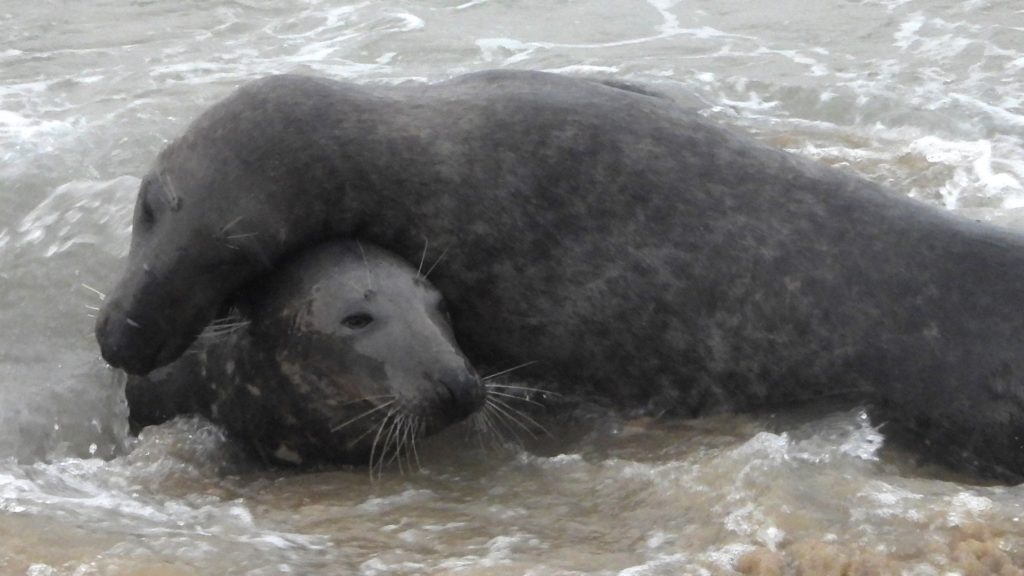
Changing our cultures
The much used phrase ‘Up close and personal’ is not helpful when thinking or talking about wildlife. All wildlife, including seals, need space in their home away from us. All the photos in this blog were taken with a Nikon P1000 superzoom camera with a 3000mm lens from a remote clifftop. You will notice none of the seals were looking at the camera. Any photo with wildlife looking at the camera likely knew it was there and so the wildlife was disturbed. Our photos look ‘up close and personal’ but are not. We can enjoy similar wonderful sights using binoculars. Viewing seals in these ways really does help seals.
Equally our desire to share what we have seen with the world on social media is not helpful either. Much better to share photos of wildlife not in real time and without giving away the specific location. Naming locations invariably drives others (who may be less aware of best practice) to these sensitive sites to seek out similar encounters. It always helps to share best practice messaging at the same time. If people do ask on social media for the location, it is much better to reply expaining why you will private message them, rather than sharing publicly, to give them the location with a little best practice information. You can always attach our new free Enjoy, Respect, Protect leaflet at the same time (see below).
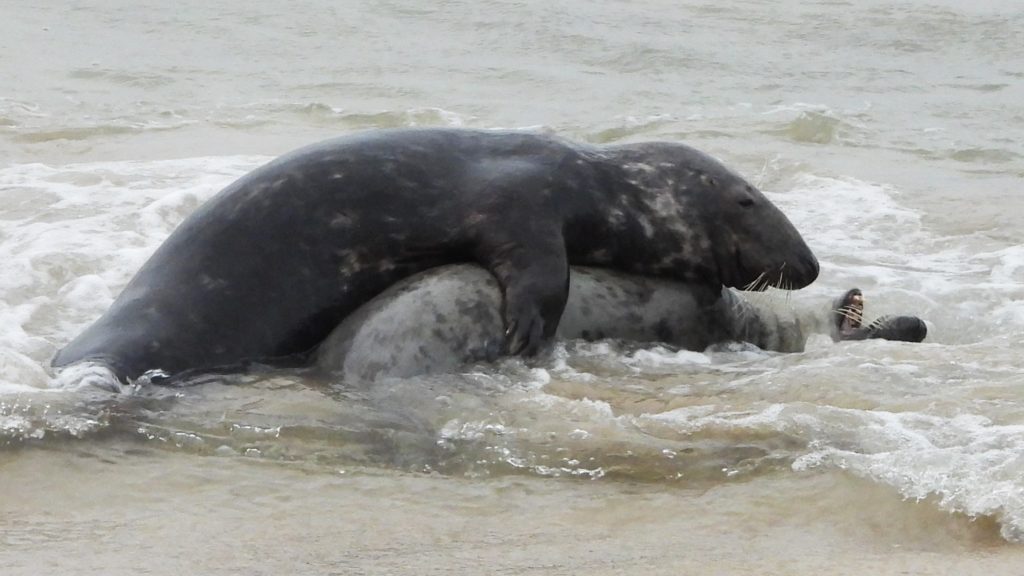
Free resource we would love you to share
In May 2023, Defra released their Marine and Coastal Wildlife Code. Here at the Seal Research Trust, we have just designed an folder A3 DL ‘Enjoy, Respect, Protect’ leaflet interpreting Defra’s guidelines into best practice for different coastal users around seals.
Our Defra and Seal Alliance endorsed Enjoy, Respect, Protect leaflet is free to everyone!
If you would like to download a copy to print yourself to share or display….go ahead!
If you want free copies posting to you, to distribute on your patch, just ask by emailing [email protected] with how many you would like (100, 200, 500?), your address and phone number (required by the postal service)
Please help us and seals to get key best practice messaging out as far and wide as possible. Our seals are suffering in silence and we need to bust a few myths about how they respond to our presence and the invisible and delayed impacts we have on them.
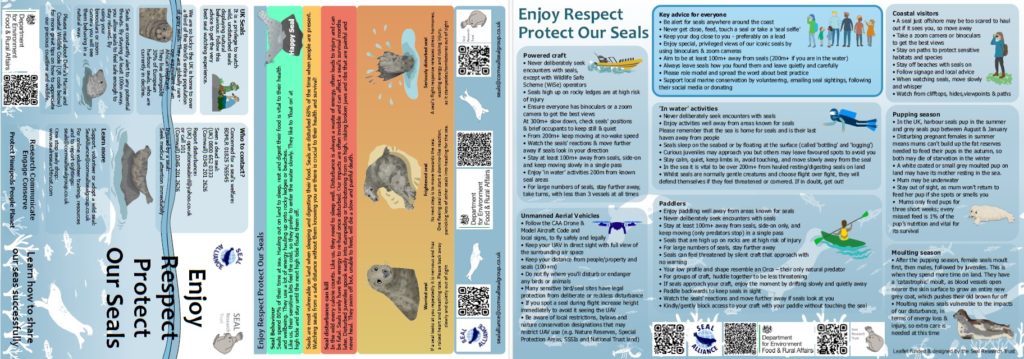
Thank you. To support our marine conservation work with seals, please visit our website, online shop or contact us about volunteering from your home ([email protected])!
